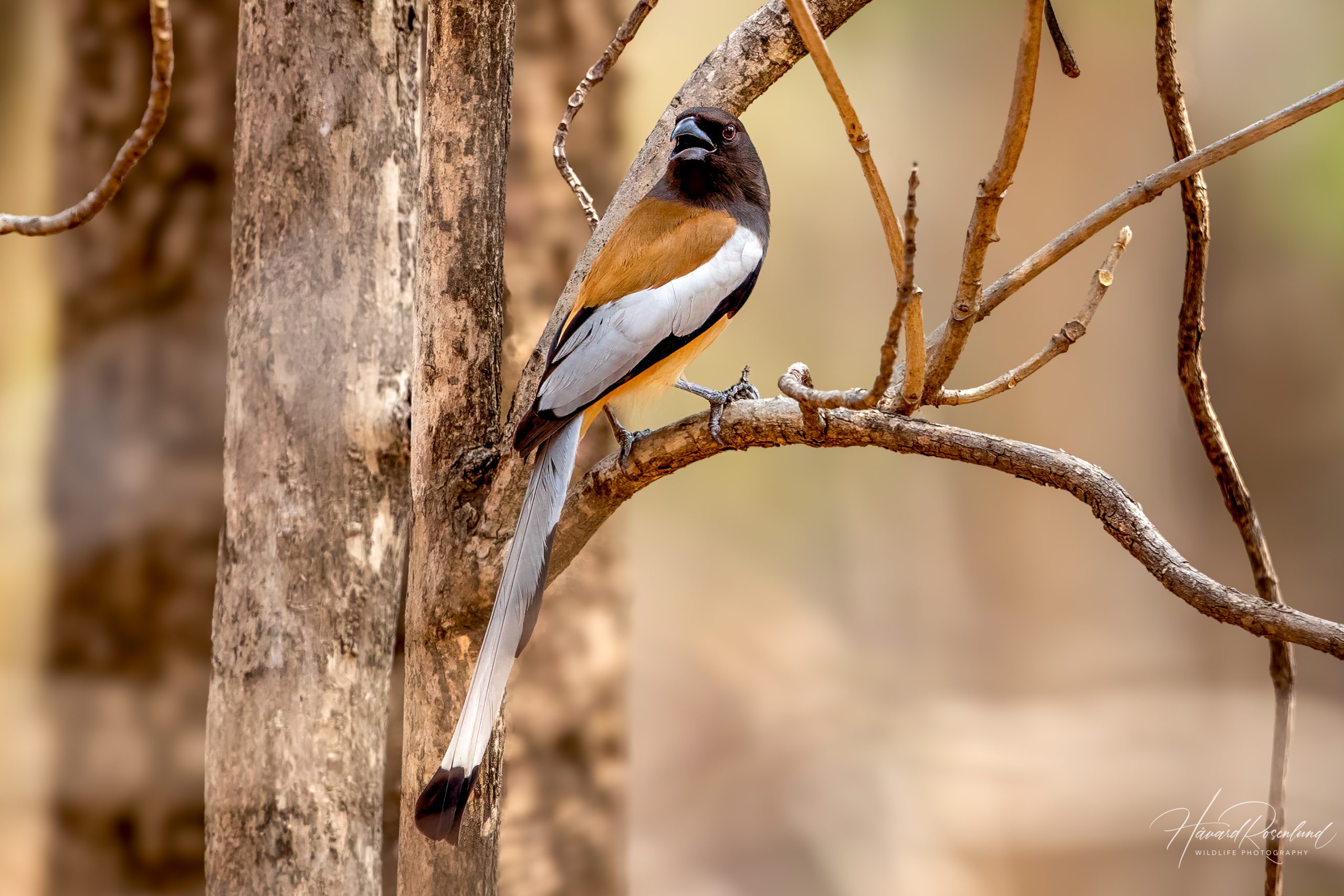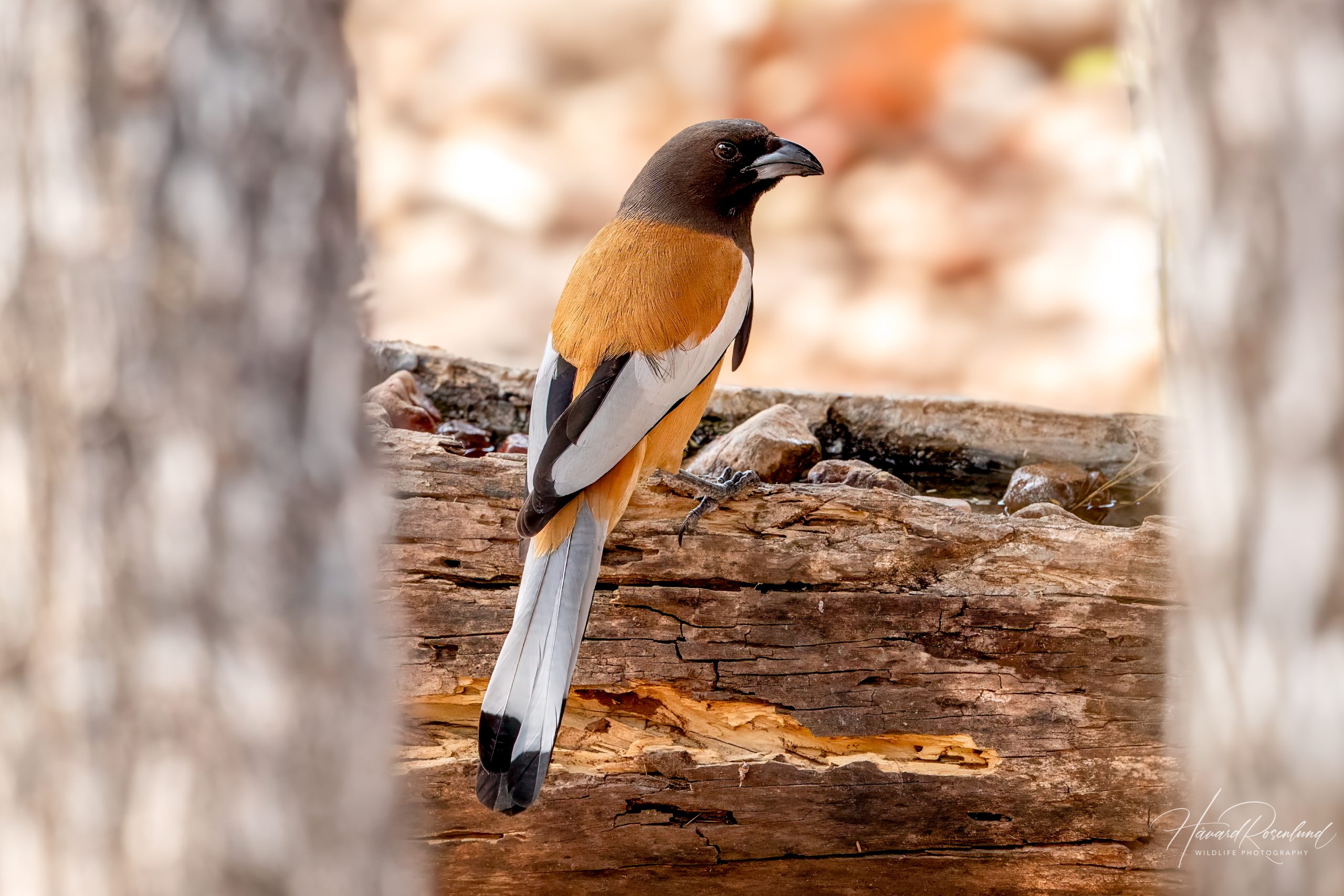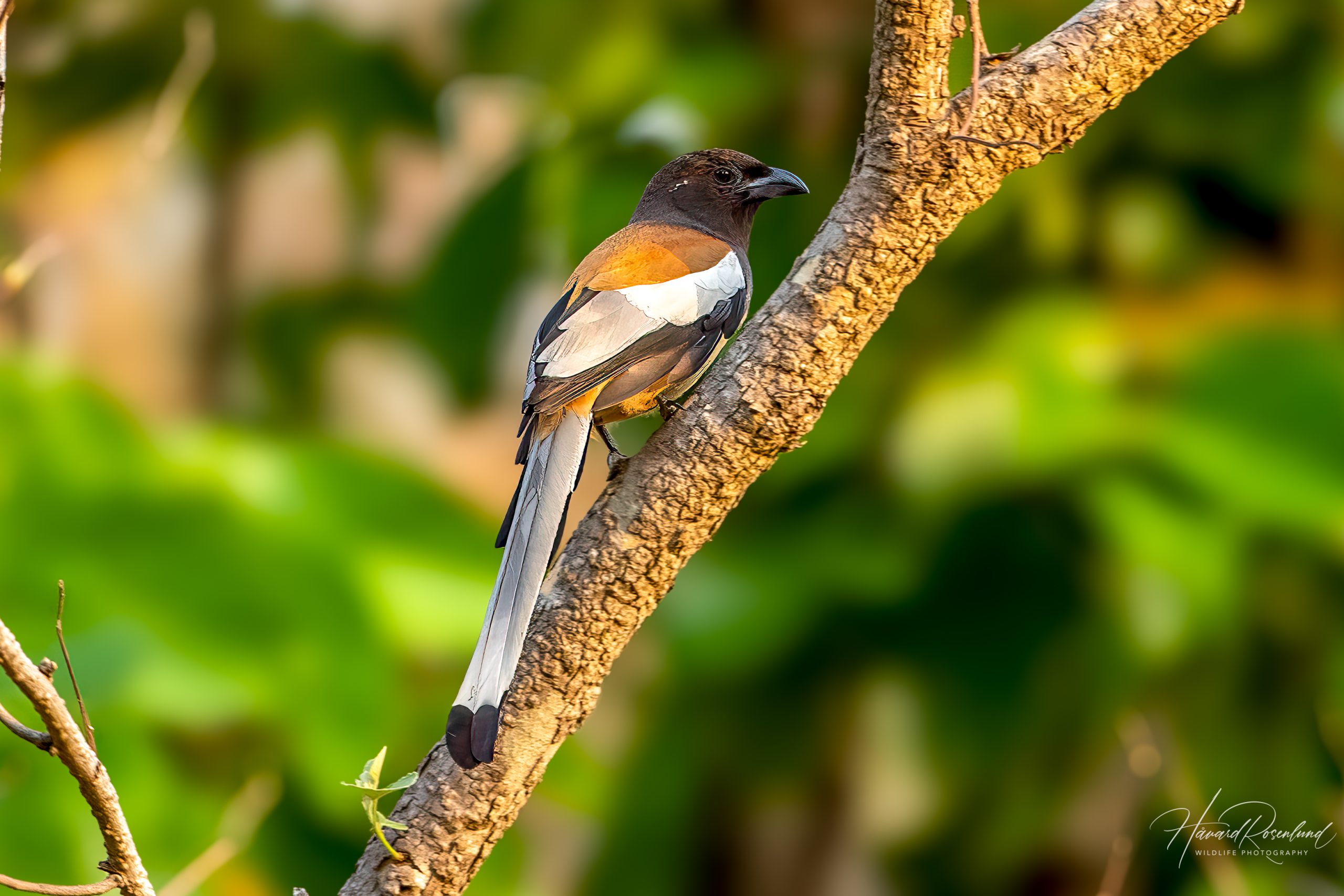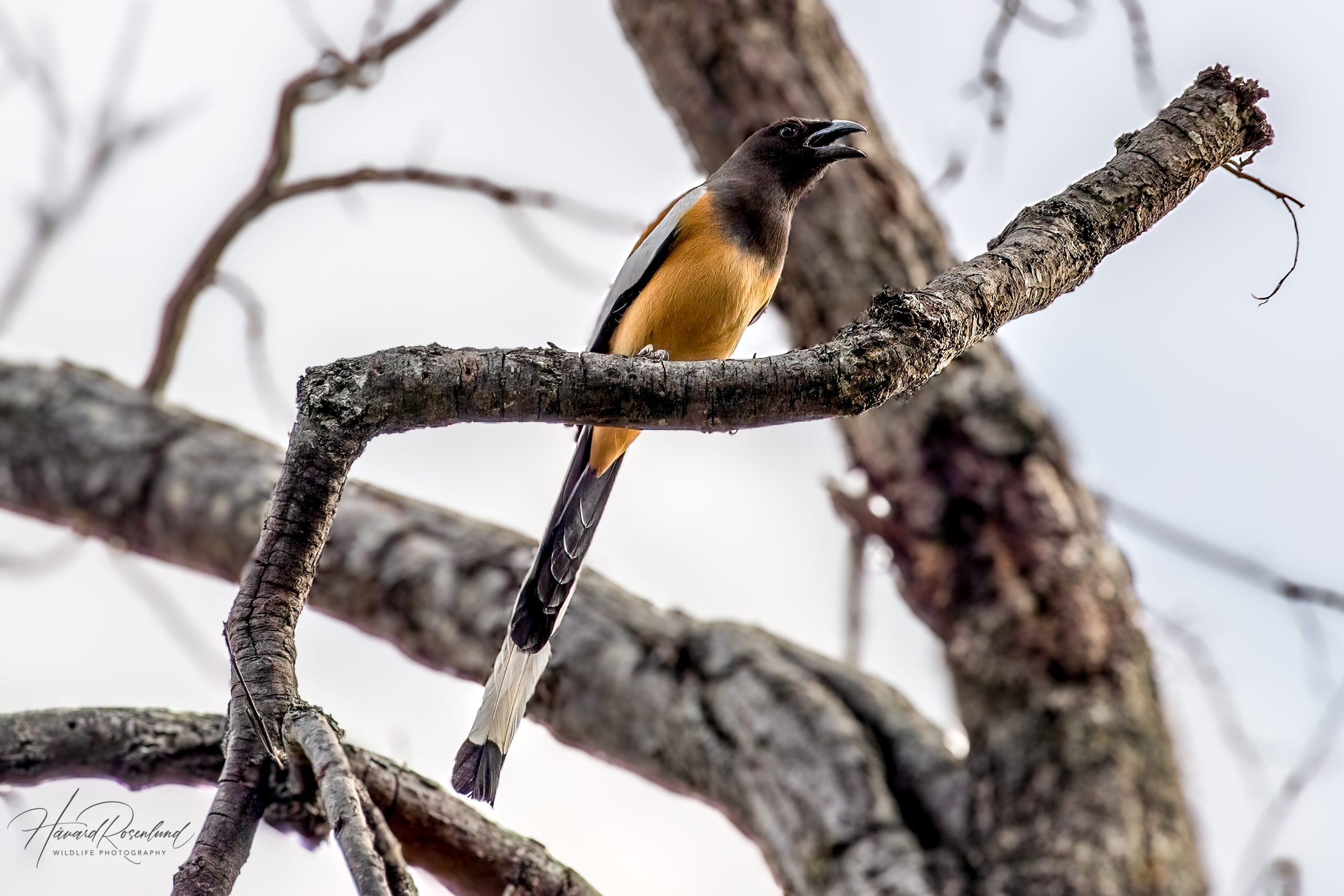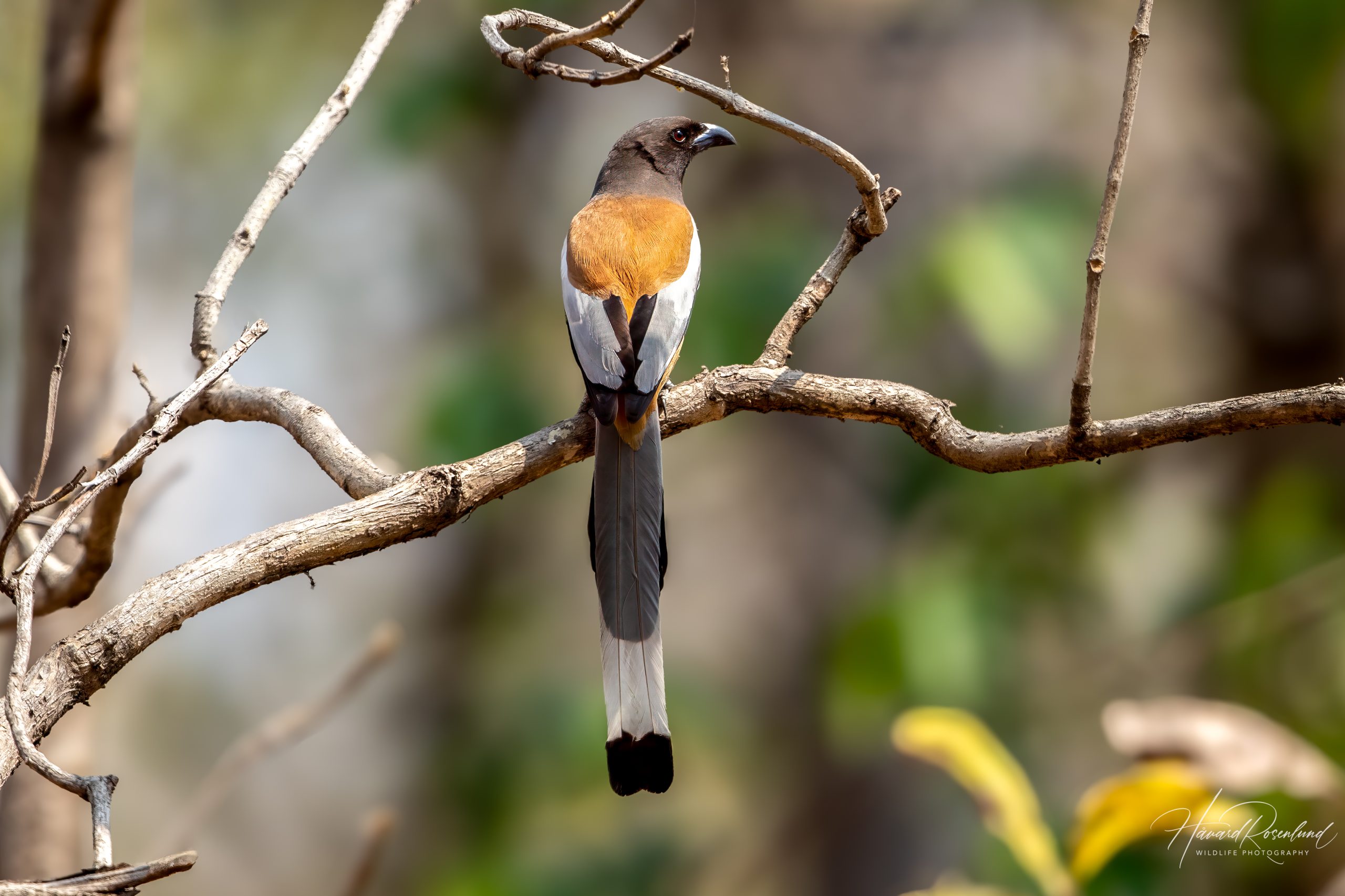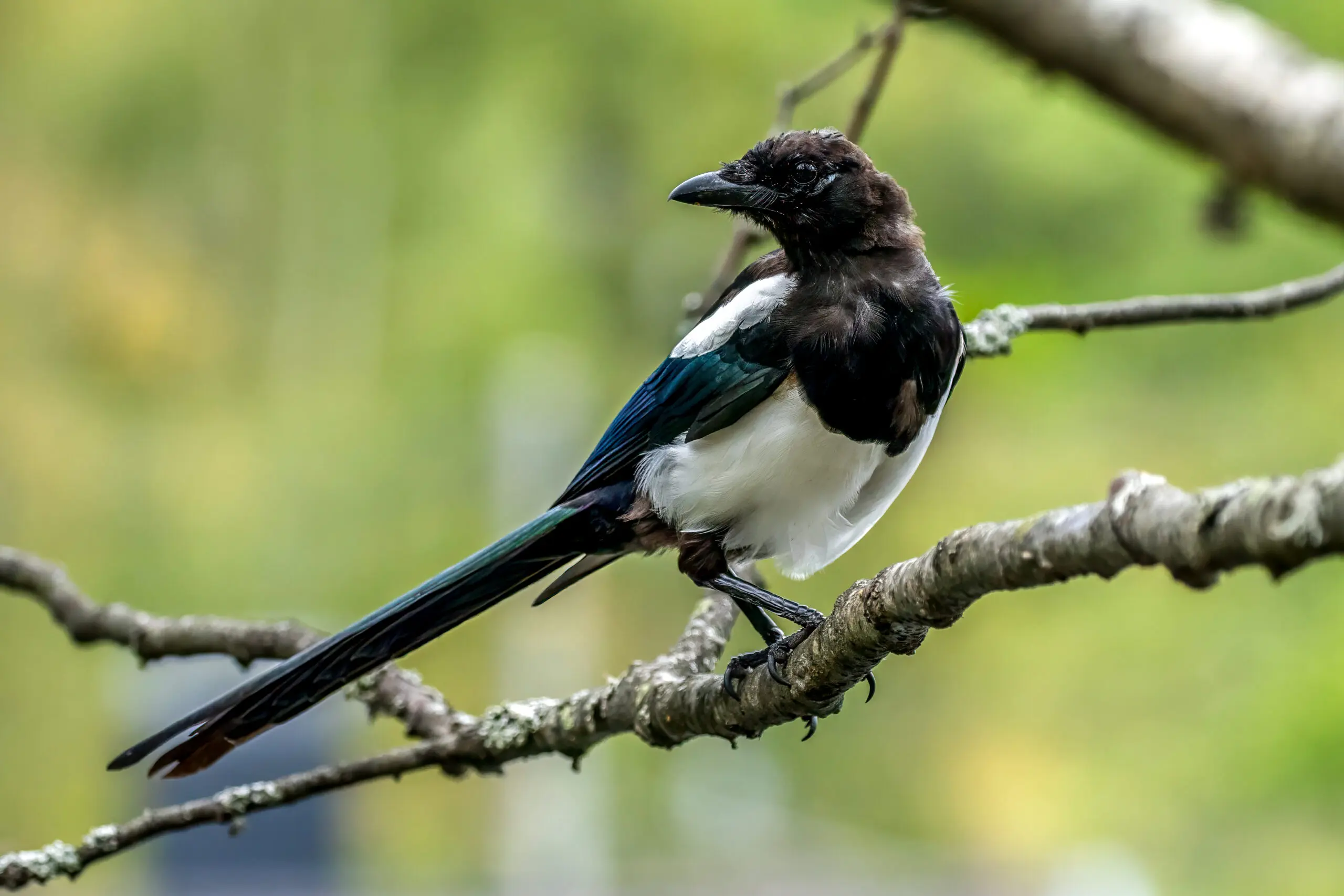Description
The rufous treepie (Dendrocitta vagabunda) is a colorful corvid native to the Indian subcontinent and Southeast Asia. It is reminiscent of the Eurasian magpie (Pica pica) in size and appearance. Adult individuals measure about 46-50 cm (18.1-19.7 in) in length, including their long tail. Their plumage is predominantly rufous (reddish-brown), with a black head and neck, as well as black and white wing patches. The long tail is white above with a black tip, and the undertail feathers are black. This species is somewhat similar to other species of treepie, such as the grey treepie (Dendrocitta formosae), but can be distinguished by its warmer, rufous hues, the all-black head, and a more pronounced contrast in its black and white tail pattern. Rufous treepies are highly vocal and have a wide range of calls, often mimicking other birds and sounds from their environment.
Diet & habitat
The rufous treepie thrives in a variety of habitats, ranging from deciduous forests and dense scrublands to cultivated areas and city parks. They are highly adaptable and can be found from lowland plains to hilly regions up to an elevation of 3000 meters. It is an omnivorous bird with a versatile diet. It consumes fruits, seeds, invertebrates, small reptiles, and even the eggs and nestlings of other birds. It can use its strong beak to probe into crevices and peel away bark to uncover insects. Treepies are also known to scavenge, often seen around human settlements where they exploit food scraps.
Nesting
The breeding season for the rufous treepie typically spans from April to July. They build their nests in the forks of trees using twigs and roots, forming a loose cup shape. Both parents participate in nest building. The female lays 3-5 eggs which are incubated primarily by her, though the male assists occasionally. The incubation period lasts about 16-18 days. Chicks hatch altricial, meaning they are initially blind and featherless, requiring significant parental care. Both parents feed the chicks, which fledge approximately 18-20 days after hatching. Rufous treepies are known for their aggressive defense of the nest, often mobbing potential predators to protect their offspring.
Status
The rufous treepie is classified as least concern by the IUCN Red List. Despite habitat degradation in some regions, their adaptability to various environments, including urban areas, has allowed their population to remain stable. They are not considered threatened and are commonly observed within their extensive range.




